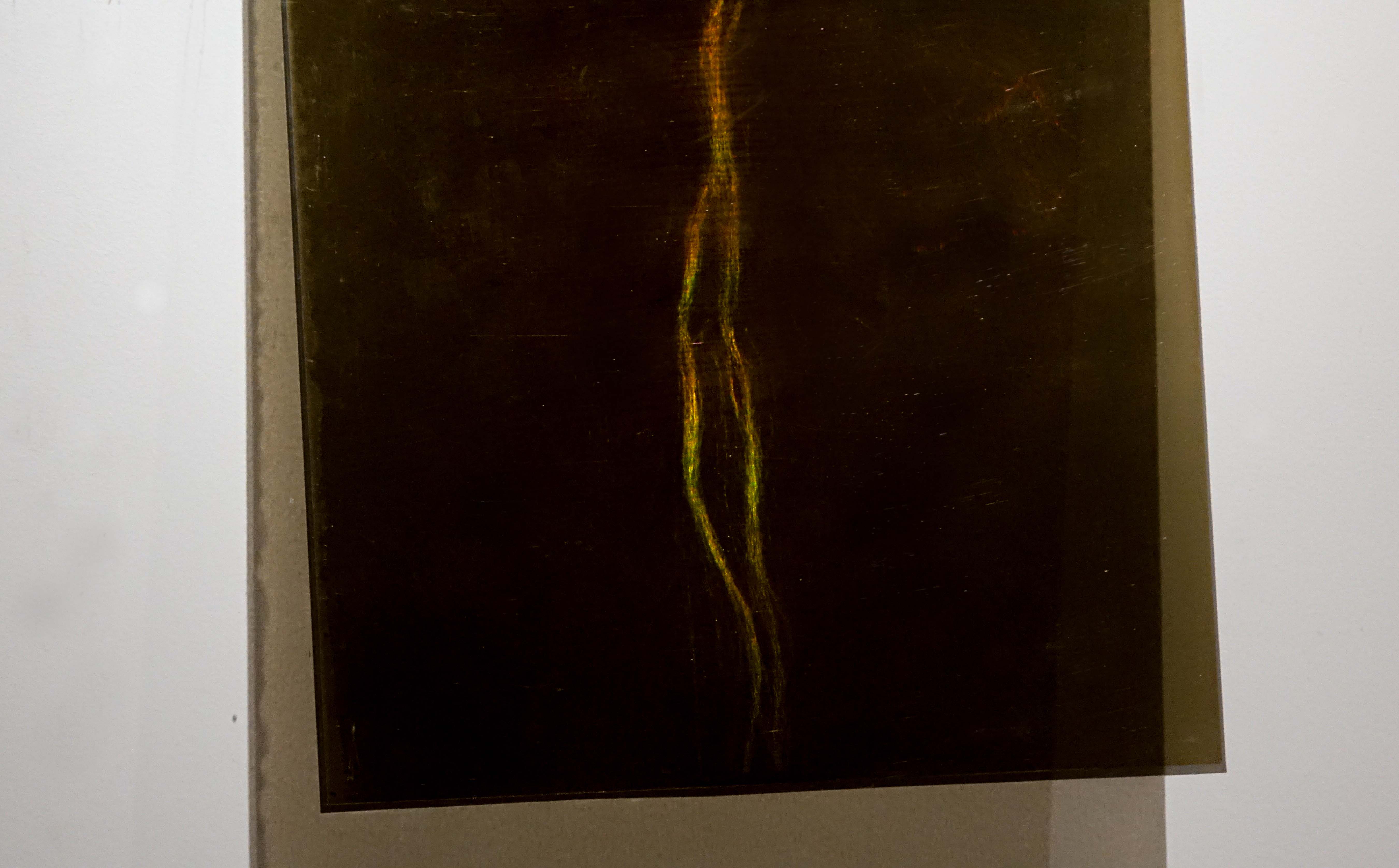
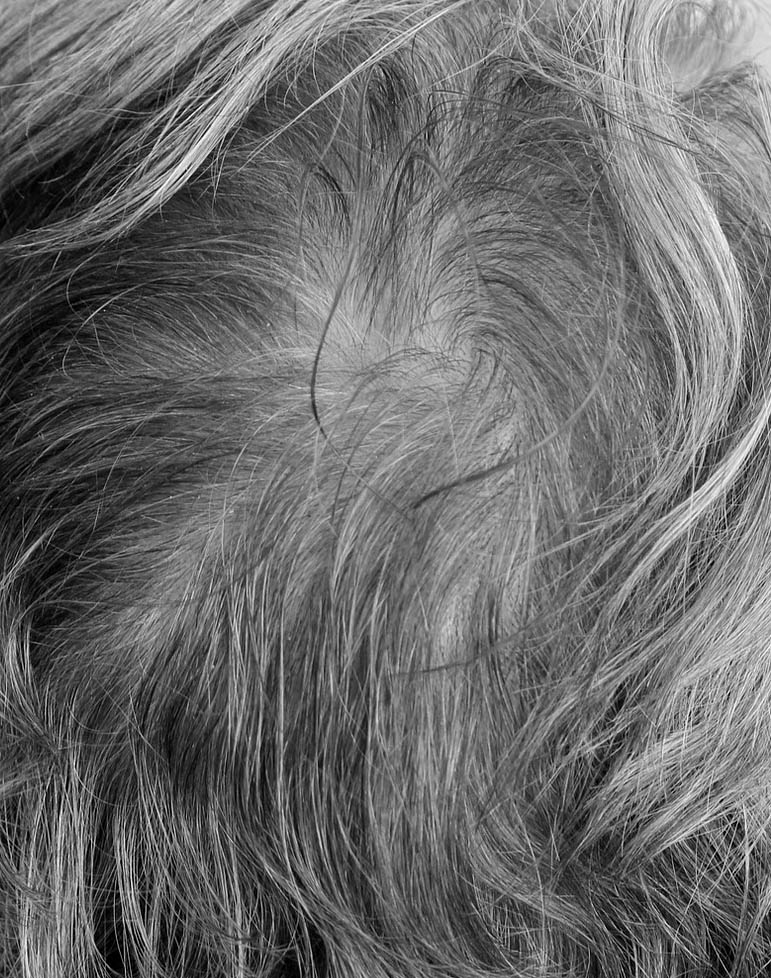
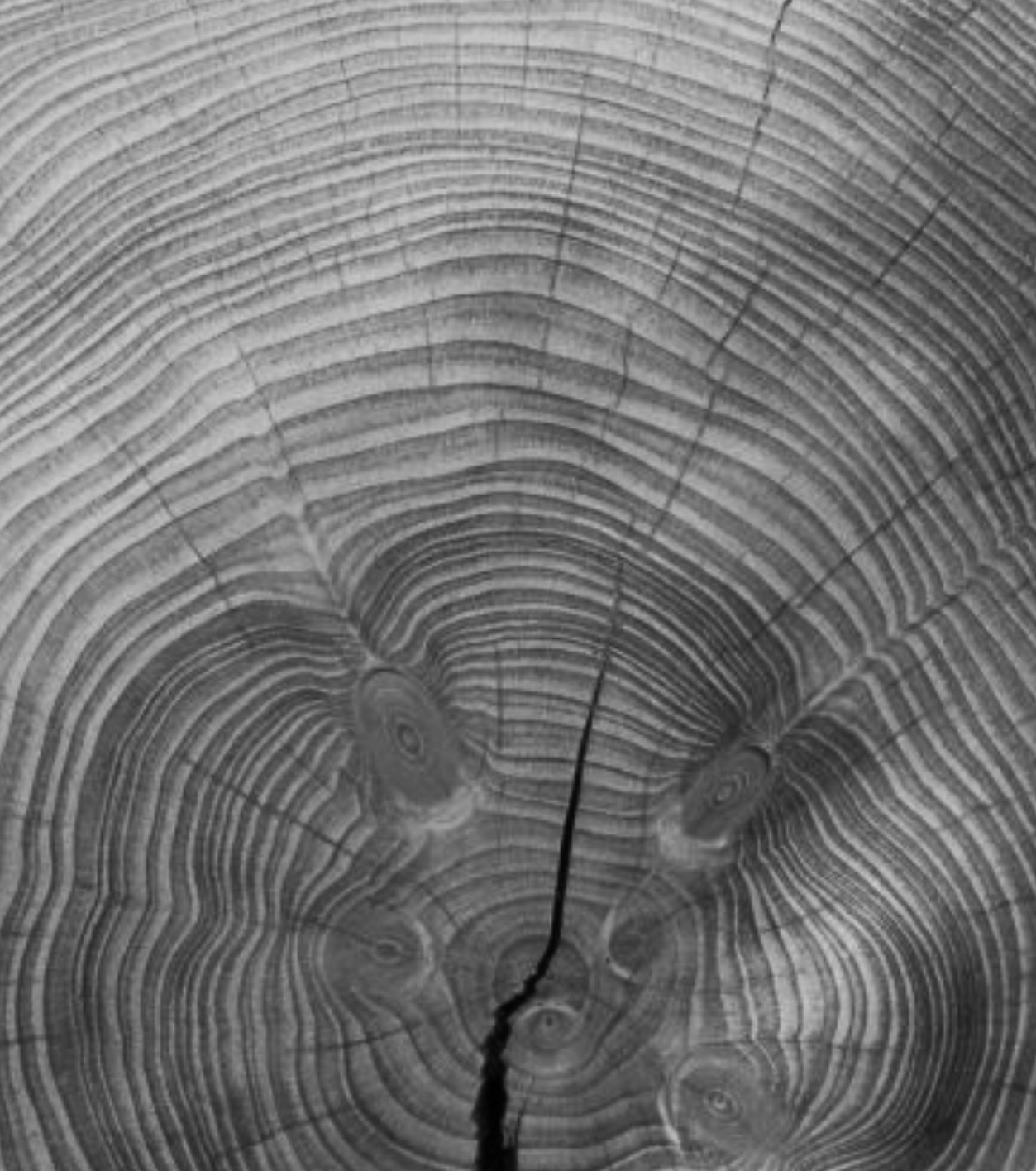

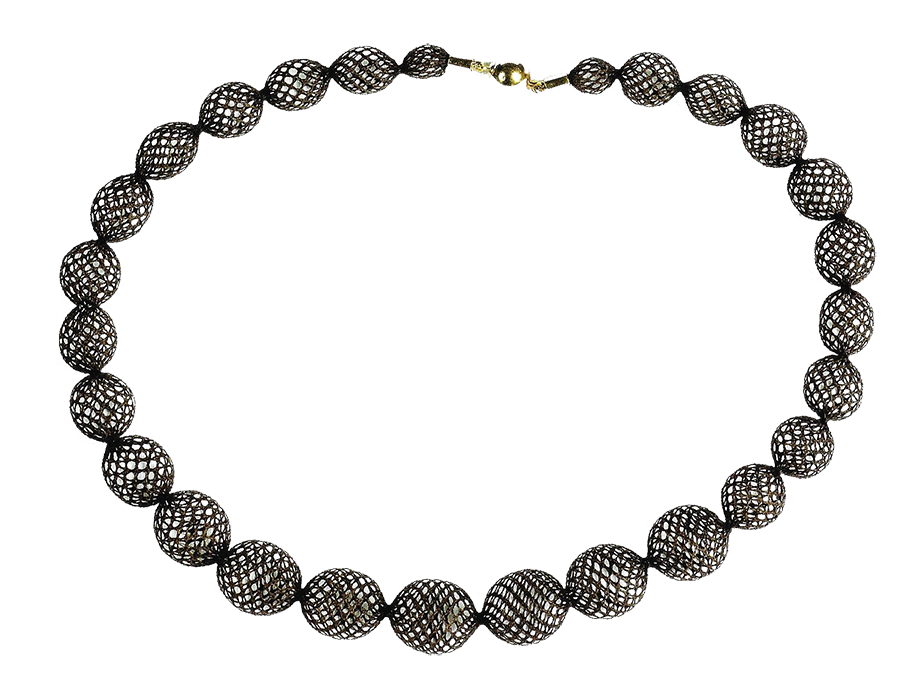
Braided hair and gold necklace, 46 cm and 2.4 gr (c. 1850).
National Museum of Romanticism, CE-8447.
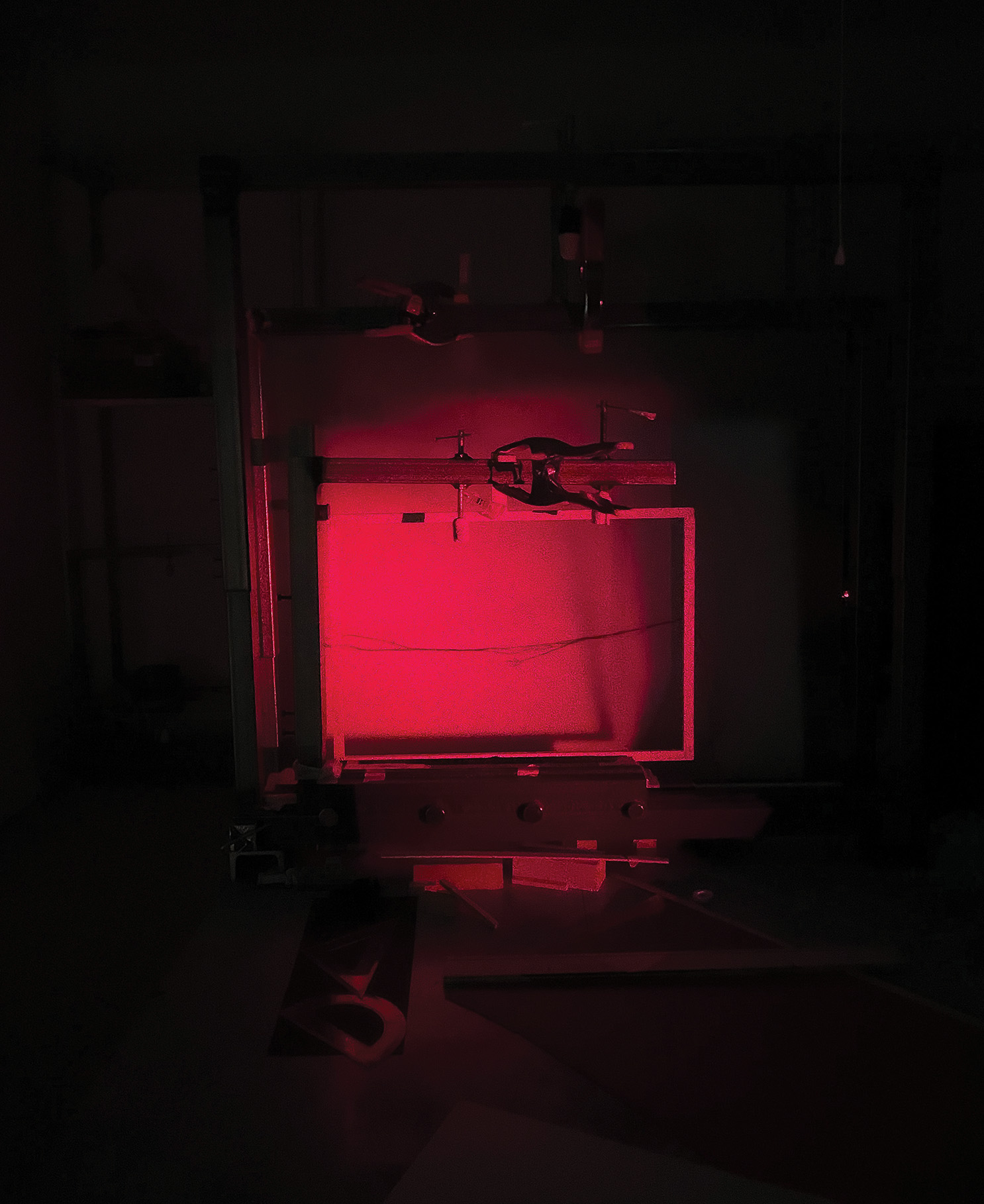
Diffraction occurs when a wave encounters an obstacle or a slit. The angular width of the central maximum is inversely proportional to the width of the slit, that is, to the ratio between the width and the wavelength.
![]()

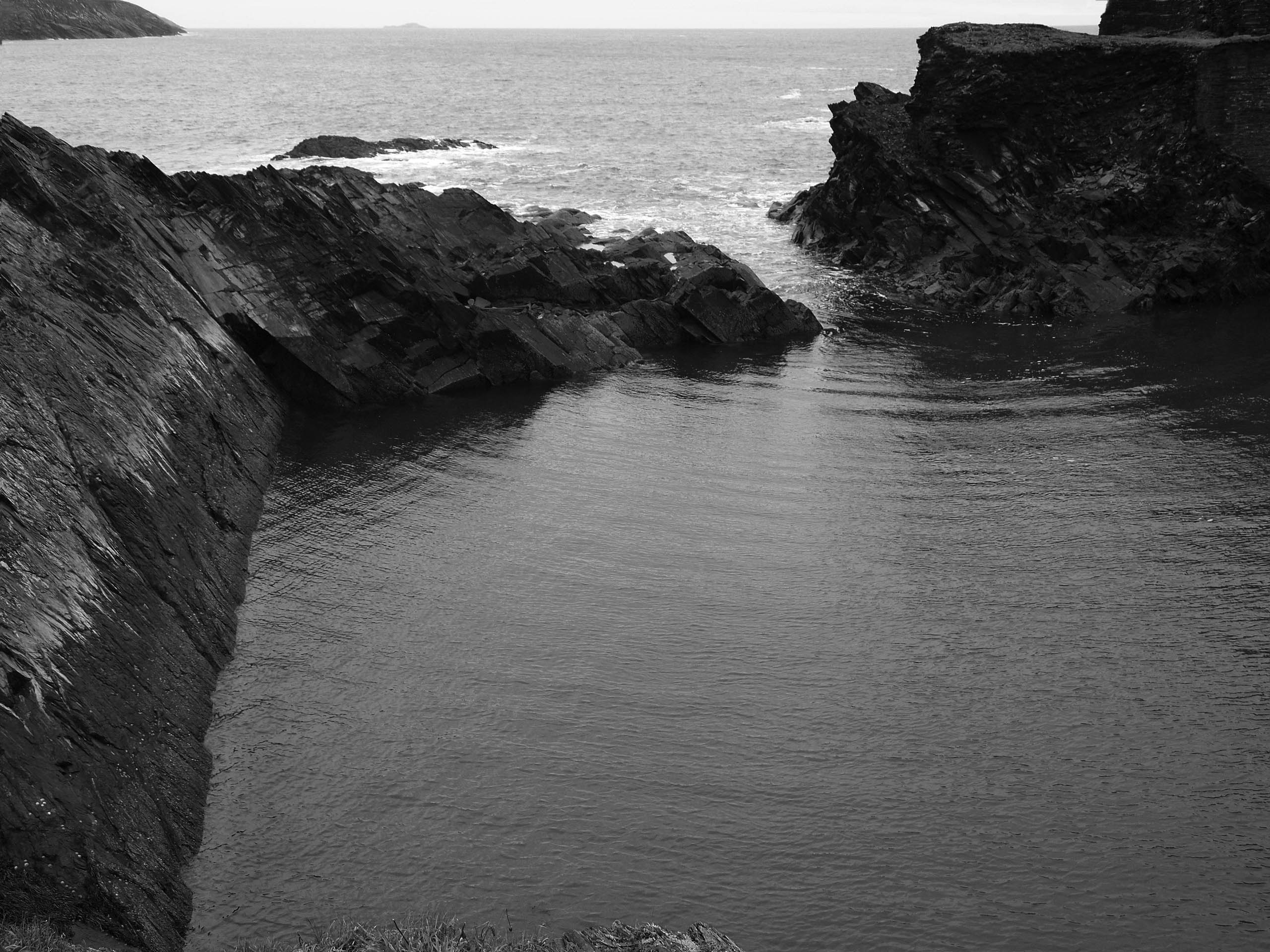
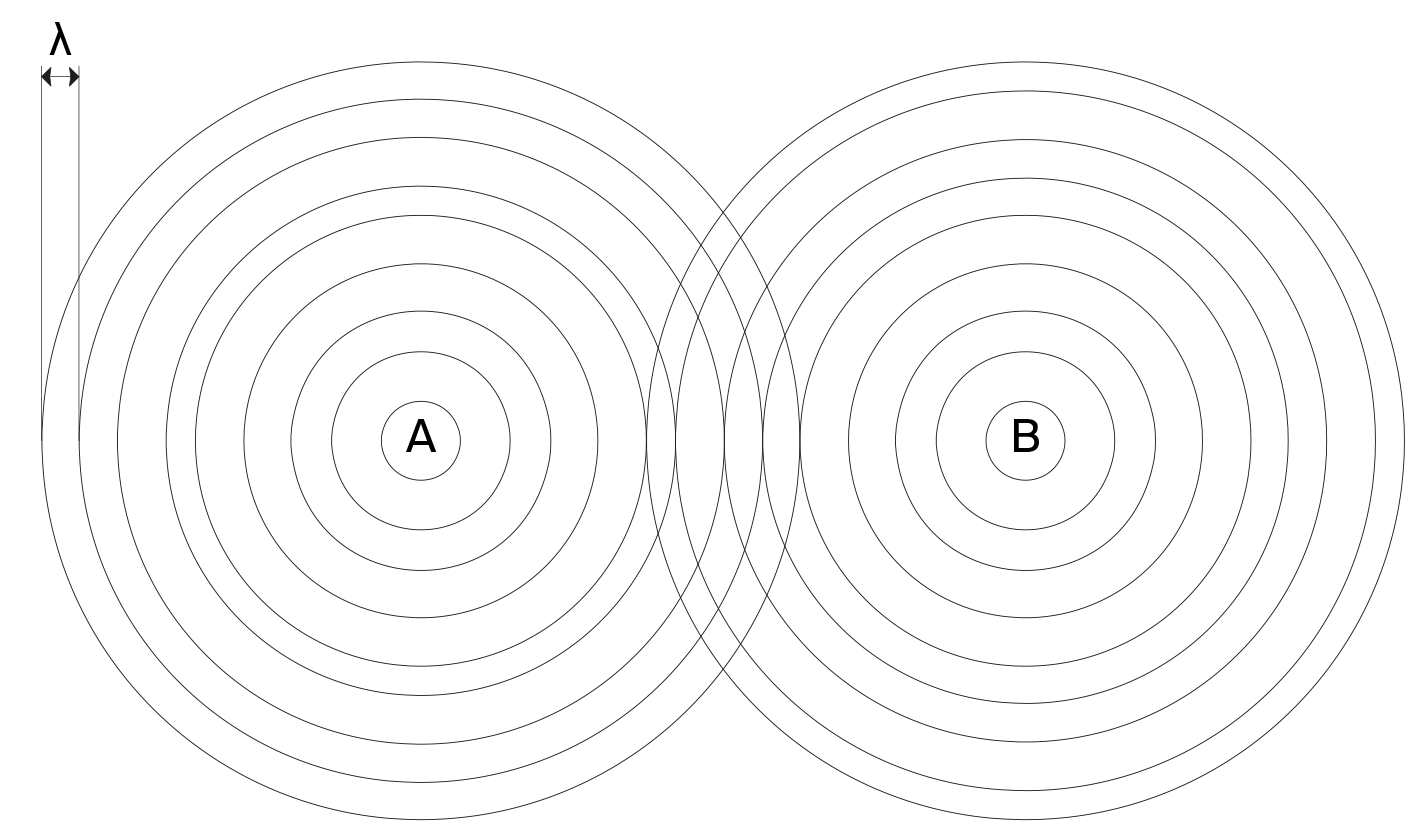
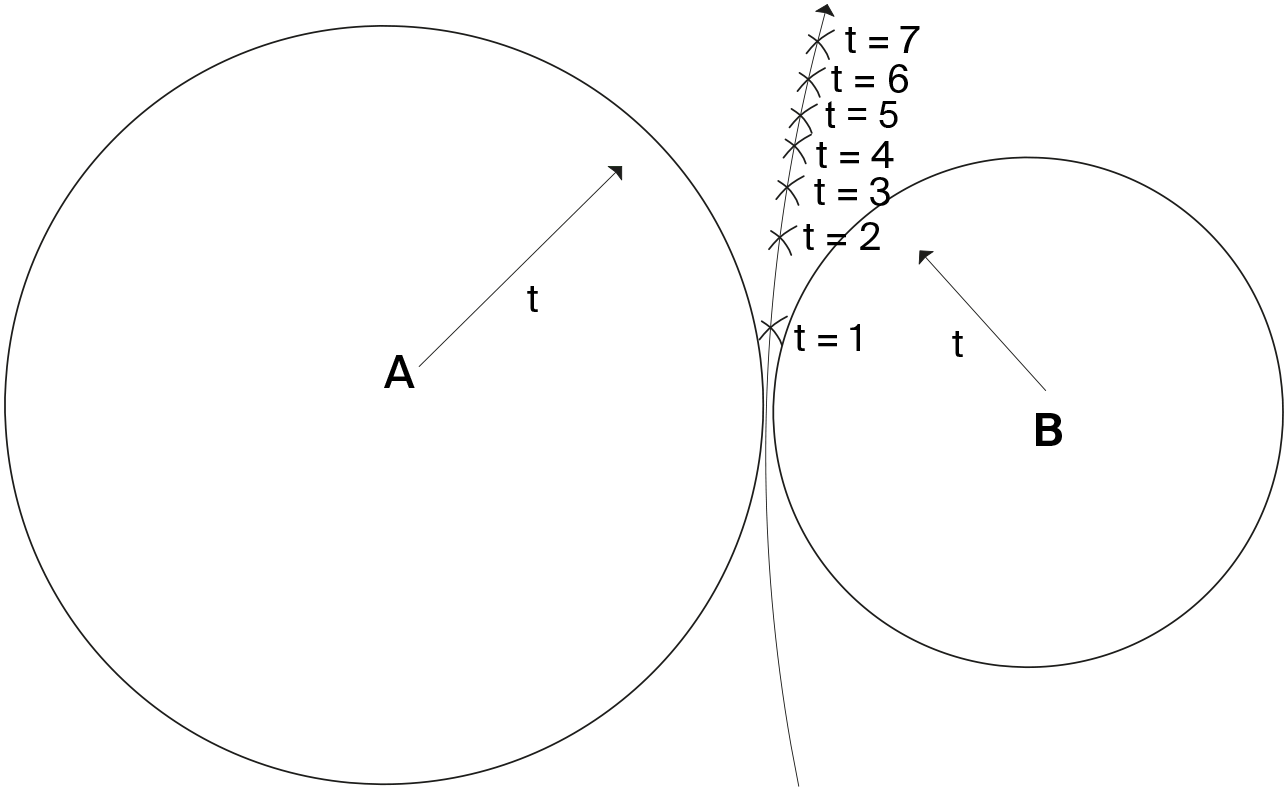
Wave fronts and interference patterns produced by two point light sources
Formation of hyperbolas by advancing the points of constructive interference.
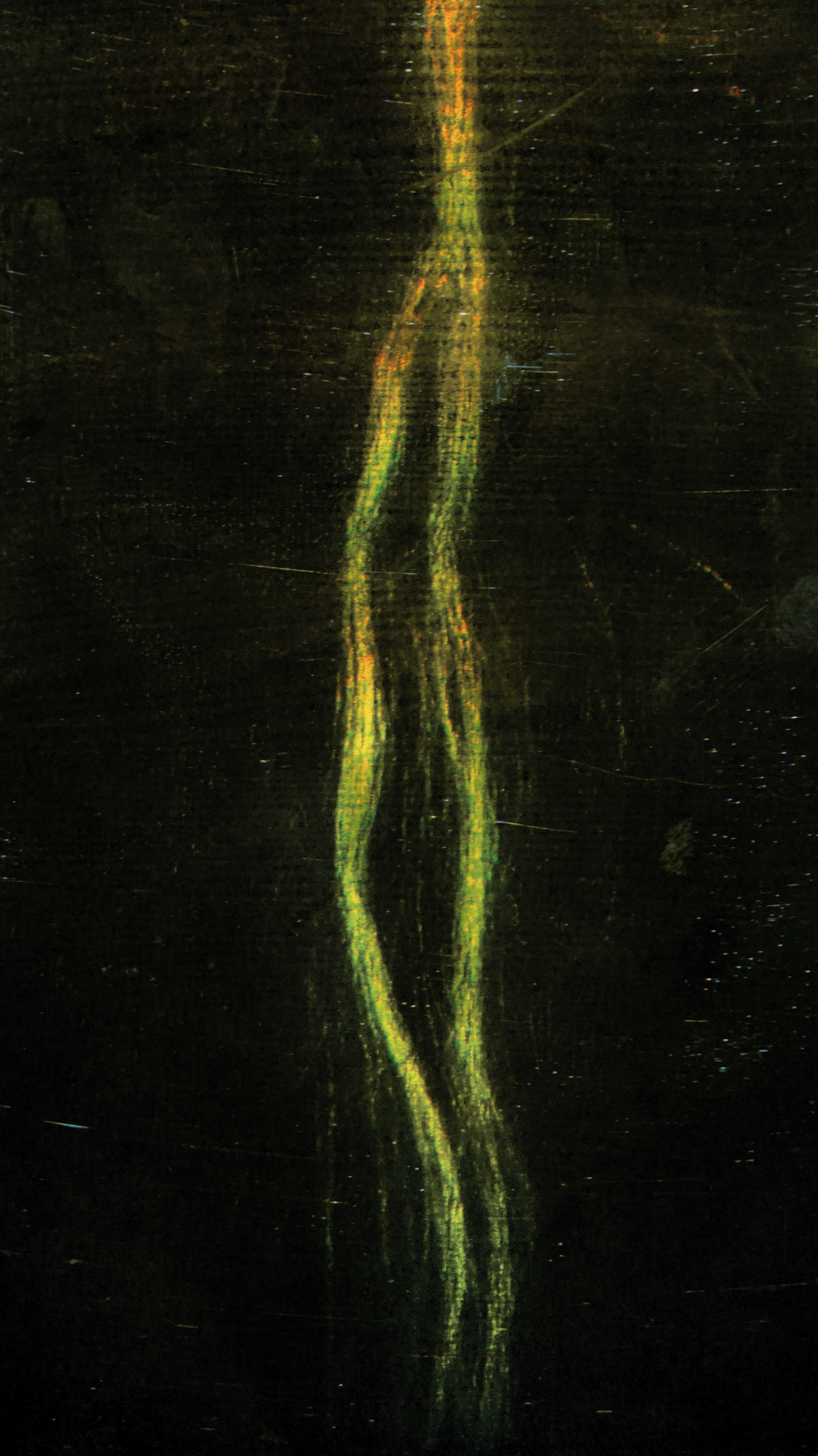
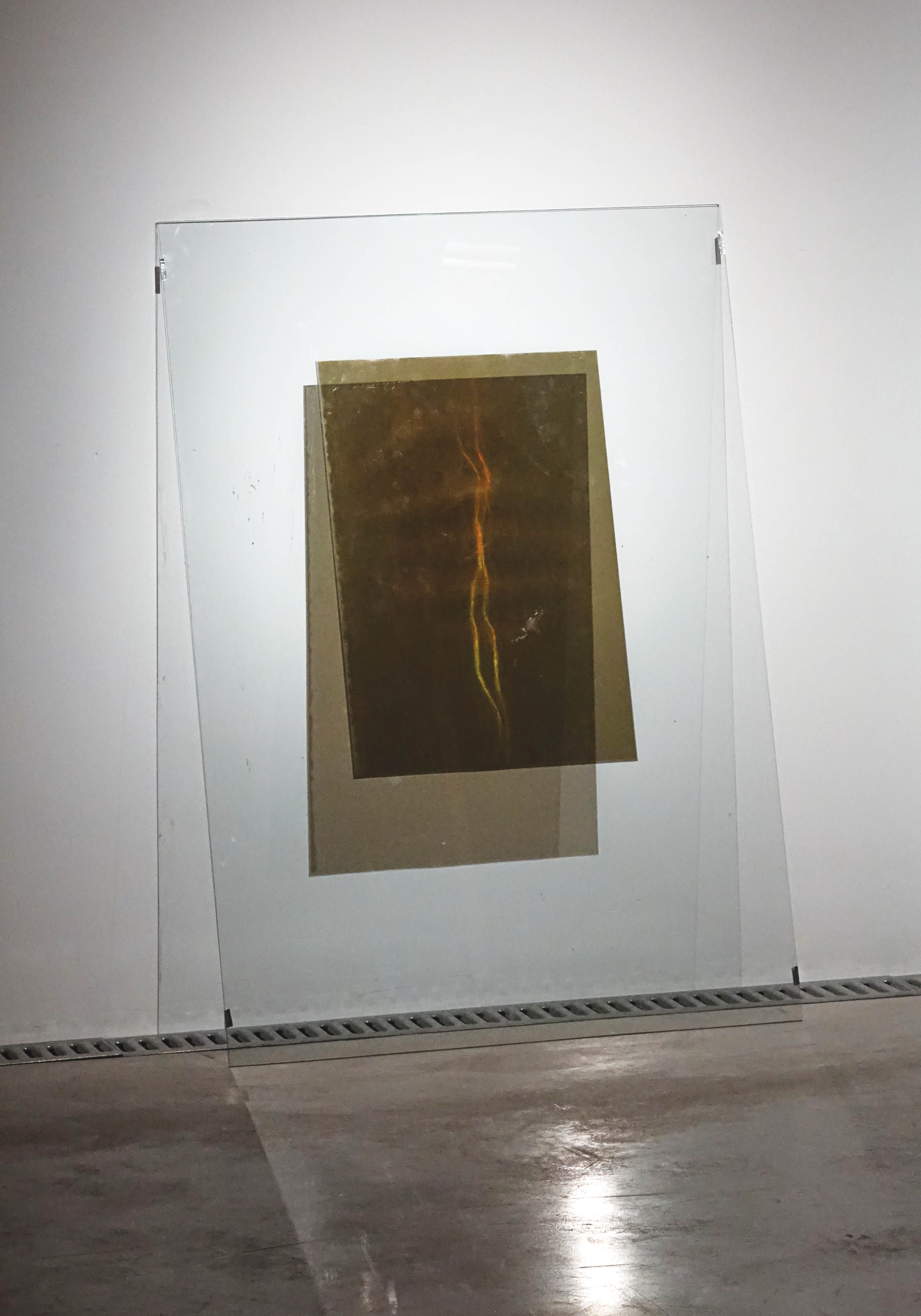
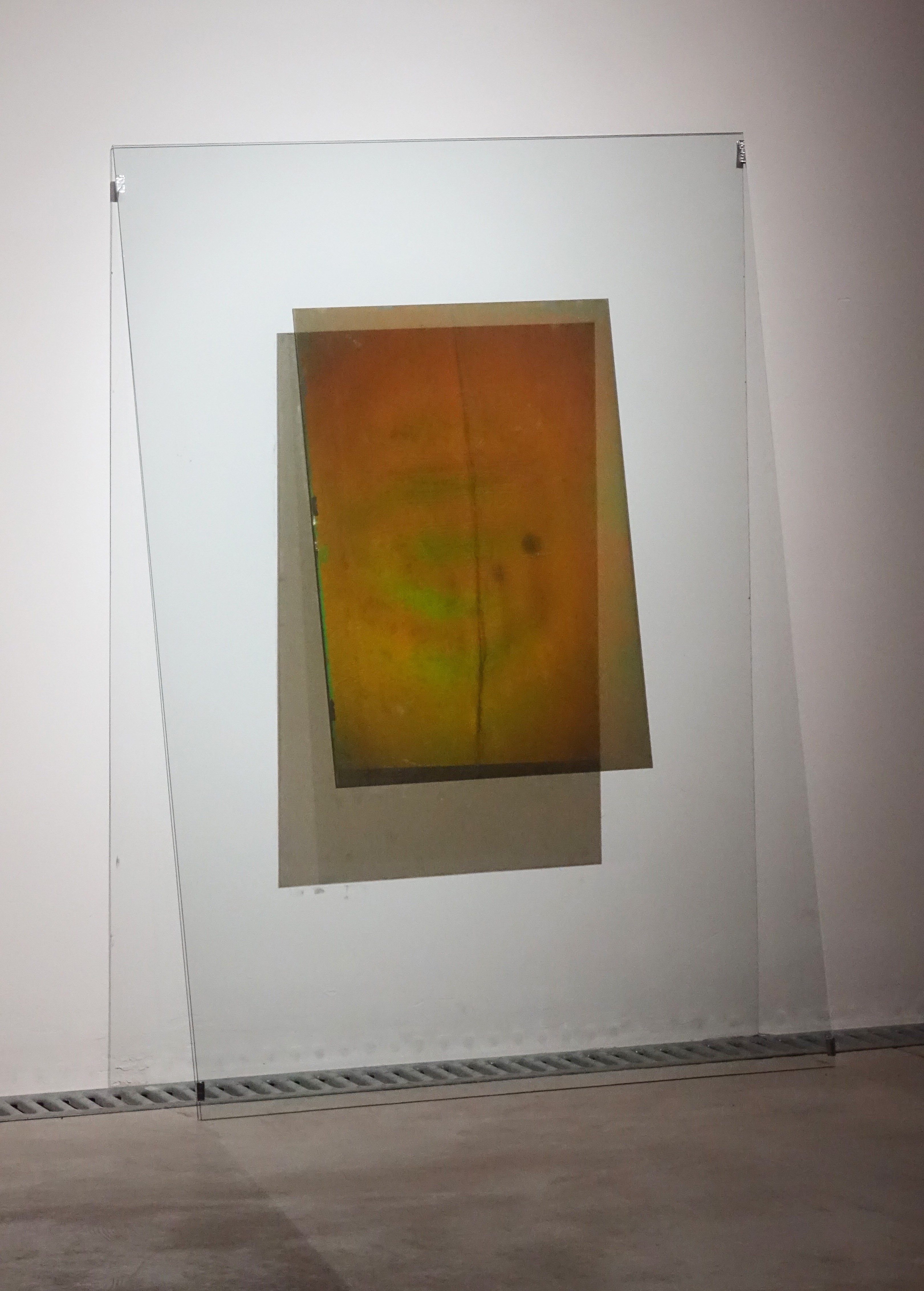
Hair Holograms
silver halide emulsion in glass, 100x70cm
Fundación BilbaoArte Fundazioa, 2022
–
The intersection of a hair with a beam of laser light generates a diffraction pattern. In the blind point of intersection, the light behaves quantumly as a wave and a body and acts as a new light source: the waves add up or cancel each other out, generating interference.
A hologram works like a pattern of light beams. Record constructive and destructive interference patterns caused by hair fibers in contact with light photons. All the three-dimensional information of the hair and its surrounding space is captured, generating a spatial fold. A sort of space-time entanglement. Because hair is the measure of all measures: it is the carrier of genetic information that, in its discoloration, records the passage of time. But it also codifies cultural and social values to the point of being used in jewelry making during Romanticism. Rings, brooches and necklaces were made from the braiding of human hair. A way of incorporating affections into personal belongings that involved the "objectification" of a person or the personification of an object.
The project has been carried out in residence at Dados Negros Centre of Holographic Arts, with holographer Pepe Buitrago, whom I thank for his collaboration and teaching.